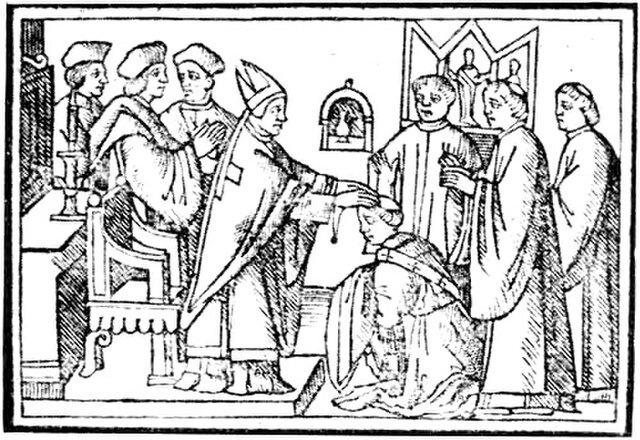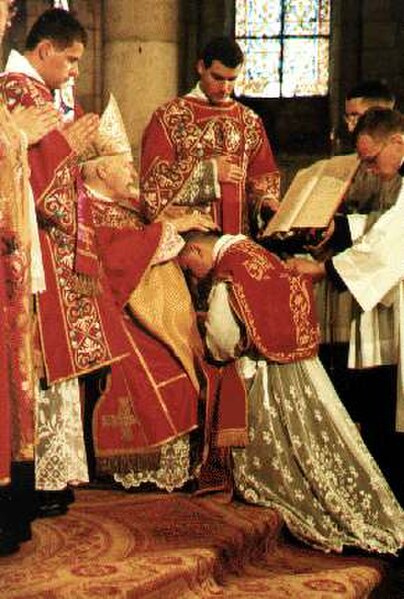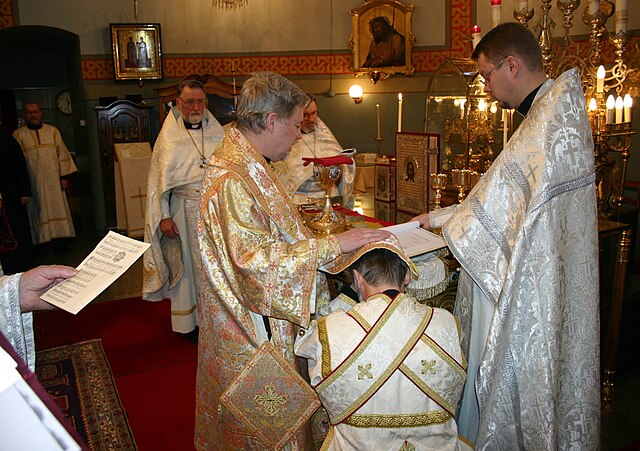Ordination is the process by which individuals are consecrated, that is, set apart and elevated from the laity class to the clergy, who are thus then authorized to perform various religious rites and ceremonies. The process and ceremonies of ordination vary by religion and denomination. One who is in preparation for, or who is undergoing the process of ordination is sometimes called an ordinand. The liturgy used at an ordination is commonly found in a book known as an Ordinal which provides the ordo for celebrations.
Ordination of a Catholic deacon, 1520 AD: the bishop bestows vestments.
Ordination of a Catholic priest (pre-1968 form of the Roman Rite).
Ordination of an Orthodox. The deacon being ordained is kneeling with the bishop's omophorion over his head as the bishop blesses him immediately before the Cheirotonia.
Eastern Orthodox subdeacon being ordained to the diaconate. The bishop has placed his omophorion and right hand on the candidate's head and is reading the Prayer of Cheirotonia.
In religious organizations, the laity consists of all members who are not part of the clergy, usually including any non-ordained members of religious orders, e.g. a nun or a lay brother. In both religious and wider secular usage, a layperson is a person who is not qualified in a given profession or does not have specific knowledge of a certain subject. The phrase "layman's terms" is used to refer to plain language that is understandable to the everyday person, as opposed to specialised terminology understood only by a professional.
The person stood in the pulpit wearing vestments is a cleric, whereas the people seated below are of the laity.





